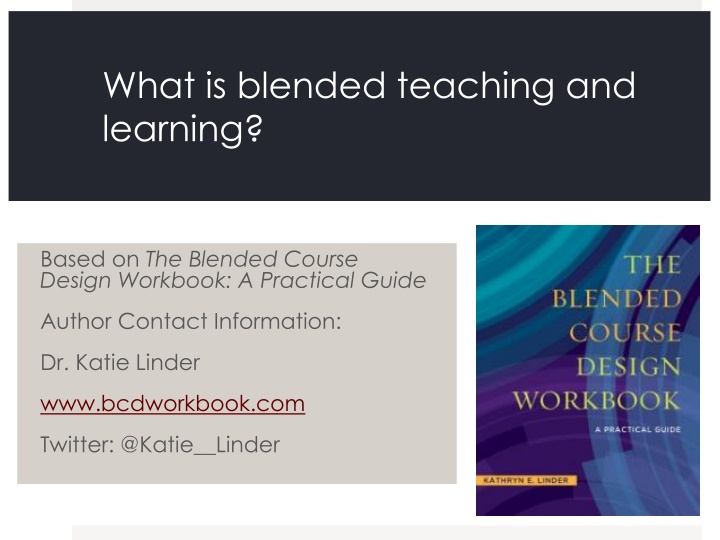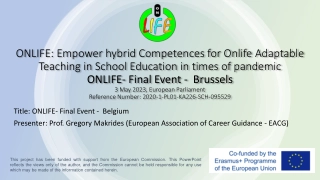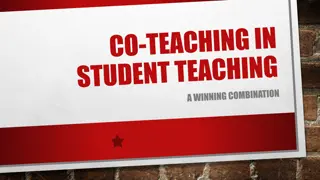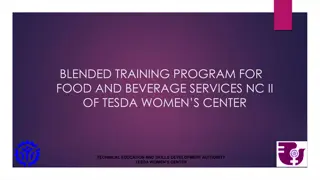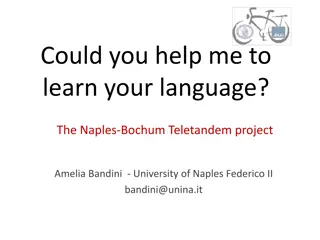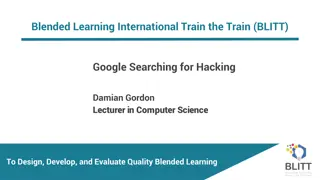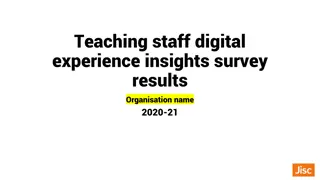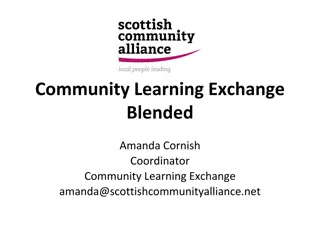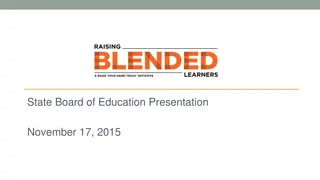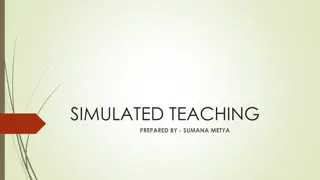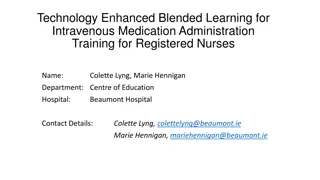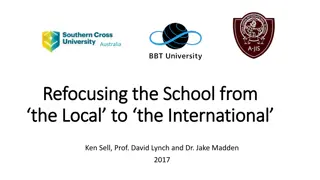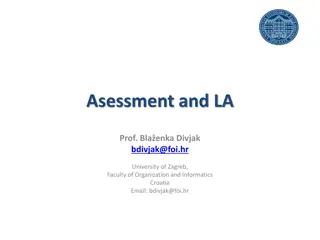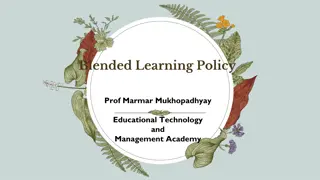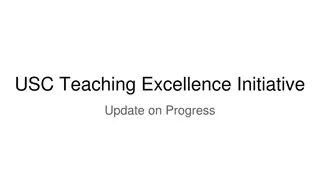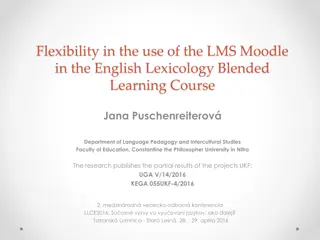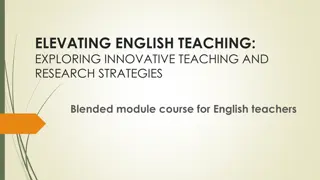Blended Teaching and Learning: A Practical Approach
Blended teaching and learning combine traditional face-to-face instruction with online content delivery, offering benefits like active learning and student autonomy. Faculty need to understand the spectrum of web integration and the differences between blended and flipped learning. While blended learning requires upfront design and planning, it can enhance student engagement and provide faculty with new teaching skills.
Download Presentation

Please find below an Image/Link to download the presentation.
The content on the website is provided AS IS for your information and personal use only. It may not be sold, licensed, or shared on other websites without obtaining consent from the author.If you encounter any issues during the download, it is possible that the publisher has removed the file from their server.
You are allowed to download the files provided on this website for personal or commercial use, subject to the condition that they are used lawfully. All files are the property of their respective owners.
The content on the website is provided AS IS for your information and personal use only. It may not be sold, licensed, or shared on other websites without obtaining consent from the author.
E N D
Presentation Transcript
What is blended teaching and learning? Based on The Blended Course Design Workbook: A Practical Guide Author Contact Information: Dr. Katie Linder www.bcdworkbook.com Twitter: @Katie__Linder
Objectives What is blended learning? Benefits and challenges of blended teaching and learning What do faculty need to know about blended teaching? What do students need to know about blended learning? Information on The Blended Course Design Workbook: A Practical Guide
What is blended learning? Increasingly popular phenomenon Replacement model face-to-face course time is replaced with online content delivery Face-to-face time often cut by 1/3 to 1/2 Credit hours stay the same Requires additional technology integration and online content Can allow for more autonomous, active, and independent learning
A spectrum of web integration Blended (may also be flipped) 100% Online Traditional face-to- face Web-enhanced (may also be flipped)
Is blended learning the same as flipped learning? Blended is structural & pedagogical Flipped is primarily pedagogical Replacement of face-to- face time No replacement of face- to-face time Best practice includes moving content delivery online to create more active learning, but this is not required Moving content delivery online to create more active learning in-class is central to the definition of the flipped classroom Requires more technological literacy on part of faculty and students Requires more technological literacy on part of faculty and students
Benefits Challenges Can create more time for active learning in class Requires more up-front design and planning Learning curve of technology and active learning for faculty and students Lets students experience course materials in a range of ways More autonomous and independent learning can lead to more student buy-in Faculty must give up some control over learning Offers faculty a new skillset for their teaching Faculty often need assistance with design
What do faculty need to know? A clear definition of what blended teaching is Blended course design requires more up-front design and planning Student use technology for social reasons, but may not be experienced with using it for learning At first, students may struggle with time management and autonomous learning Faculty shouldn t try to incorporate too many tools at one time and overwhelm themselves and their students
What do students need to know? Blended courses are not easier than face-to-face courses Students will need to take more control of their learning activities outside of the classroom Blended courses may require more and different communication strategies with their professor than students are used to Blended courses require using technology for learning, which may be new to some students
The Blended Course Design Workbook: A Practical Guide Research overviews for each chapter Interactive elements throughout including templates and checklists Practical examples from blended instructors Tasks for each chapter and specifically for LMS design Questions for faculty & administrators Glossary of terms
What is blended teaching and learning? Based on The Blended Course Design Workbook: A Practical Guide Author Contact Information: Dr. Katie Linder www.bcdworkbook.com Twitter: @Katie__Linder
